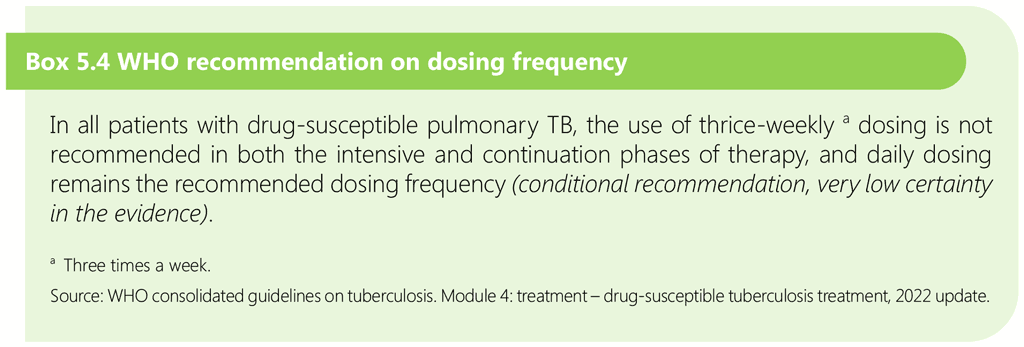5.2.5.2. Children and adolescents living with HIV
Children and young adolescents living with HIV were eligible for enrolment in the SHINE trial. A total of 65 children and adolescents living with HIV (11%) were enrolled in the 16-week arm and 62 (10%) in the 24-week arm. The 16-week regimen was non-inferior when compared with the 24-week regimen (risk difference −4.3, 95% CI −14.9 to 6.2) (86).

 Feedback
Feedback